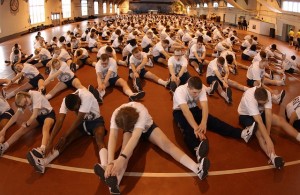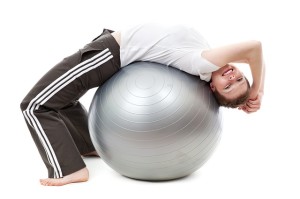Universal Stretching Routines and the Importance of Warming-Up
Most sports and exercise programs can be dangerous for the joints, tendons and muscles if you perform them without a decent warm-up first.
 This is a short guide to help people understand the importance of warming-up before they engage in any form of physical action and some simple routines to follow to help get you started and keep you free from injury.
This is a short guide to help people understand the importance of warming-up before they engage in any form of physical action and some simple routines to follow to help get you started and keep you free from injury.
1) Stretching, both static and dynamic, is an excellent method for warming up and lengthening the muscles and lubricating the joints. It prepares your body for highly loaded physical activity so you can be safe while executing complex moves during your game.
The main purpose of warming up is to gradually increase the range of motion for all important muscles in your body, up to a point that corresponds with your degree of flexibility and fitness level.
It is also very important that you execute the warm-ups before every exercise program or game you play.
2) If you force a cold muscle too much, it can easily tear. This will cause you extreme pain and you will more than likely be unable to play your favourite sport or do your daily exercise program for months and sometimes even longer. So to avoid any long term injuries invest in a short 10 to 15 minute stretching routine or light jogging before your exercise or game. It will make a great difference to your mobility and the elasticity of your muscles, joints and tendons.
3) The easiest warming-up technique is the good old stretching with holding positions for about 30 seconds. You need to do that for all major parts of your body such as legs, arms, back and neck. You should also consider some dynamic stretching exercises, as they are also very effective in warming-up the muscles and preparing them for the effort that’s about to follow especially for any body contact sports.
4) A good example of dynamic stretching is swinging your arms back and forth while holding them extended (start with them at your sides). Combine this with bodyweight squats so you squat down as you swing your arms down and the reverse for the upward motion. Like a jumping jack but your feet remain on the floor.
For maximum effectiveness, you have to repeat the moves for about 30 seconds each. Bends of the upper body, alternatively to the left and to the right, are also very useful.
 5) For your abs, you can lie backwards on a Swiss ball, raise your arms above your head and push back gently, so that you feel your abs working, but not too intensely. Do at least two sets of ten.
5) For your abs, you can lie backwards on a Swiss ball, raise your arms above your head and push back gently, so that you feel your abs working, but not too intensely. Do at least two sets of ten.
6) Next lie down, face up, then raise one leg at a time, slowly and without bending your knees. You can use a towel wrapped around your leg for a stronger effect. Repeat the exercise ten times for each leg.
7) Still laying down face up, stretch your back by bringing your knees up to your chest, then rolling forward and back until you touch the floor with your head. Do 10 rolls, if you can. If you find them too hard then do as many as you feel comfortable with (never force your body into an uncomfortable position), then gradually increase their number over the next few weeks.
8) Another effective warming up exercise is called “the windmill”. It consists of alternatively touching your toes with the fingers of the opposite hand while bending over at the trunk. Start slowly, and then gradually increase your speed until you really start to look and feel like a crazy windmill in a strong breeze.
9) After performing your warm-up, you should start your main exercise or sport immediately (don’t stand around having a chat and getting cold again) so as your muscles and joints remain elastic and flexible and ready for action.
If you have back problems or haven’t exercised for a considerable length of time then consult your doctor before attempting any of the exercises or routines described above.
Leave a Reply